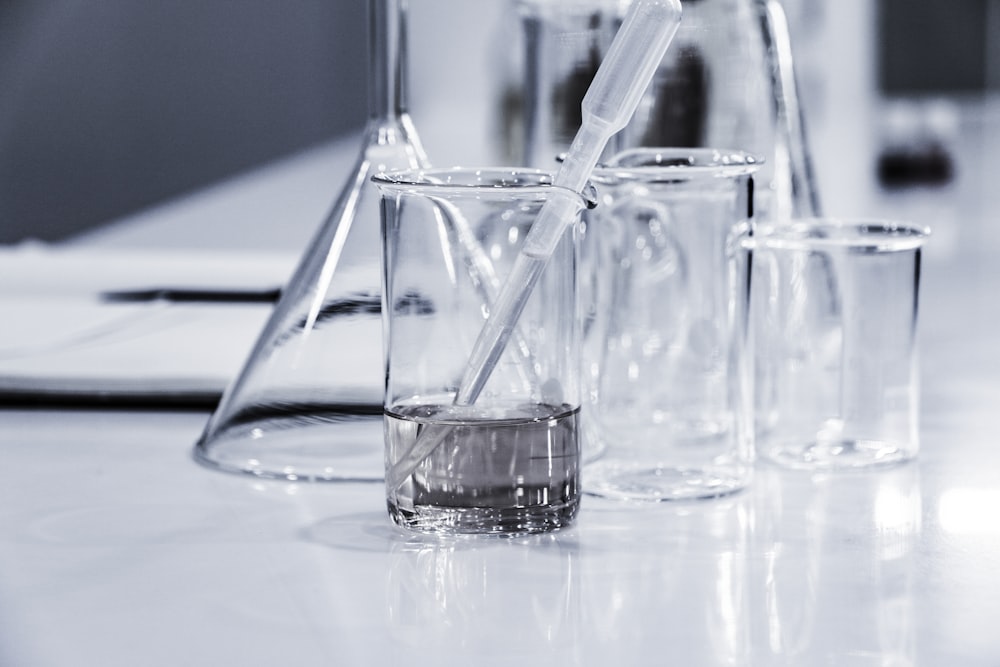Forget complex labs—the next breakthrough in drug synthesis might start with a rain barrel.
In an ingenious twist, chemists are turning to one of nature's most abundant resources – rainwater – to build vital molecular frameworks called quinoxalines. This isn't just about being eco-friendly; it's about unlocking simpler, cleaner, and potentially more powerful ways to create the building blocks of life-saving drugs and advanced materials.
Quinoxalines in Medicine
These nitrogen-rich ring structures are found in potent antibiotics, anticancer agents, and various pharmaceuticals, making their efficient synthesis crucial for drug development.
Green Chemistry
The quest for sustainable chemical processes that minimize environmental impact has driven scientists to explore nature-inspired solutions like rainwater catalysis.
Why Rainwater? Nature's Gentle Catalyst
Rainwater isn't pure H₂O. It picks up subtle chemistry during its journey through the atmosphere:
- Natural Acidity: Dissolved carbon dioxide forms weak carbonic acid, giving rainwater a slightly acidic pH (typically 5.0-5.5).
- Trace Minerals: Minute amounts of nitrogen oxides, sulfur compounds, and ions can act as promoters.
- Soft Solvent: Lacking the heavy ions found in groundwater or tap water, it's a gentler medium.
A Landmark Experiment: Quinoxalines from the Clouds
The Objective
Demonstrate that rainwater can efficiently and selectively synthesize diverse quinoxaline derivatives under mild, environmentally benign conditions, outperforming traditional solvents in simplicity and sustainability.
Methodology: Simplicity Itself
Collect
Gather fresh, unfiltered rainwater in a clean container
Mix
Combine the reactants in simple glassware
Dissolve
Add rainwater and stir at room temperature
Isolate
Filter and wash the precipitated product
Results & Analysis: Proof from the Precipitation
The results were striking:
- High Yields: Rainwater consistently delivered excellent yields (often >85-95%) for a wide range of quinoxaline derivatives.
- Exceptional Speed: Reactions frequently completed within 30-90 minutes at room temperature.
- Superior Green Metrics: This method scored remarkably well on green chemistry principles.
Comparative Performance Data
| Quinoxaline Derivative | Yield (Rainwater) | Yield (Ethanol) | Yield (Acetic Acid) | Yield (Water - pH 7) |
|---|---|---|---|---|
| 2-Methylquinoxaline | 92% | 75% | 88% | 40% |
| 2,3-Diphenylquinoxaline | 95% | 85% | 90% | 55% |
| Quinoxaline-2-carboxylic acid | 88% | 65% | 80% | 30% |
Environmental Impact Comparison
| Solvent | E-factor* | Toxicity |
|---|---|---|
| Rainwater | ~0.1 | None |
| Ethanol | ~5-10 | Low |
| Acetic Acid | ~8-15 | Moderate |
| Dichloromethane | ~20-50 | High |
*E-factor: Total waste generated per unit of product (Lower = Better)
Reaction Speed Advantage
Raining Benefits: Why This Matters
This rainwater method isn't just a lab curiosity; it represents a paradigm shift:
Radical Sustainability
Eliminates toxic solvents, slashes waste, uses minimal energy, and leverages a free, renewable resource.
Cost Efficiency
Drastically reduces material costs (no catalysts, expensive solvents) and potentially energy costs.
Simplicity & Safety
Easy setup, mild conditions, and non-hazardous materials make it accessible and safer.
Potential for Scalability
The straightforward process lends itself well to scaling up for industrial production.
Conclusion: A Downpour of Possibilities
The rainwater synthesis of quinoxalines is more than clever chemistry; it's a powerful symbol of green innovation.
By harnessing the subtle chemistry of raindrops, scientists have found a way to build complex, vital molecules with unprecedented simplicity and environmental responsibility. It demonstrates that sustainability and efficiency can go hand-in-hand, even in sophisticated chemical synthesis.
As research continues to explore the full scope of rainwater's catalytic potential and optimize these processes, one thing is clear: the future of chemical manufacturing might just depend on looking upwards as much as inwards. The next time it rains, consider the molecules being forged in the clouds – a natural alchemy we are only just beginning to master in the lab.

A clear glass flask containing colorful quinoxaline crystals, with a blurred background of rain falling on a window.